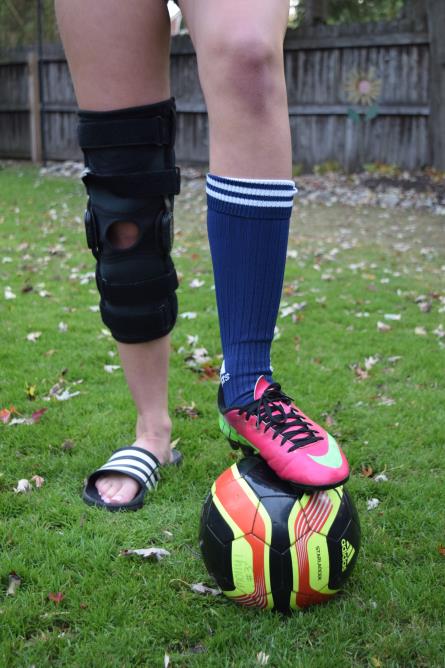Taking the risk
High school athletes jeopardize their health every time they step out onto the playing field.
Bumps and bruises are expected when athletes sign up for sports, but for more than 1.35 million teenagers last year, a sports-related injury was severe enough to send them to the emergency room.
Whether it’s a basketball to the face, a rolled ankle, or a concussion, athletes risk injury every time they step out onto the playing field. Often, the injury can be healed with ice, a bandage, or some time off, but the more unfortunate cases can end a student’s entire athletic career.
This was the unlucky reality for Mercy sophomore Grace Denomme, who found herself unconsciousness in a hospital bed. She received the horrible news that she would never be able to play soccer again.
“I was completely knocked out so I don’t remember anything,” she said. “All I know is what people like my parents and my doctor have told me. I was playing in my state cup soccer game and once I delivered the ball, the opposing team took my feet out from under me which resulted in me landing right on my head and becoming unconscious.”
Due to her constant headaches and not being able to look at an iPad screen for too long, Denomee missed an entire week of school, then attended school for two to three hours daily the following week.
“I am no longer allowed to play any contact sport whatsoever because if I do and were to get hit again, I could suffer from severe brain damage and other consequences,” Denomee said.
When signing up for sports, athletes sign up for the potential dangers and consequences, but no athlete wants to say goodbye to their sport.
Today, some high school athletes are getting career-ending injuries before they reach college. Overuse injuries from training, such as sprains and strains, are the most common ailments, according to the American Academy of Pediatrics. Head, neck, and spinal injuries, however, are still major concerns for the athletes themselves, along with their coaches and parents.
Not surprisingly, football leads a number of safety studies as the most dangerous sport. The initial body-to-body contact in football results in many injuries, and the danger of the sport has even caused a Missouri high school to cancel its entire football program.
“[As a school,] we were seeing permanent injuries. . . significant ACL tears and major concussions,” President of Maplewood Richmond Heights High School Nelson Mitten told Here & Now about the cancellation. “I think some people are focusing on ‘well this is just football.’ But I think any sort of sport that might have those sorts of injuries needs to be analyzed and make sure that you’re providing a safe and appropriate environment for children to enjoy.”
When making a decision to participate in a sport, athletes must consider the potential risks it may bring about. Whether it’s football, soccer, or basketball, athletes risk potential injury every time they lace up their cleats and step onto the playing field.

